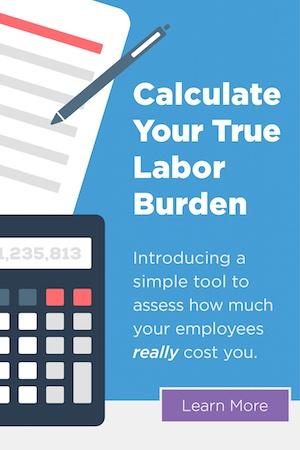New federal rules that control when workers are paid overtime wages are changing what it means for employees to be “on the clock.” For Texas businesses, the changes signal a whole new set of regulatory compliance challenges come December 1, 2016.
Overtime pay is common among hourly employees, who typically earn time-and-a-half wages for hours worked over 40 in a week. Starting soon, even salaried employees, who may believe that how much time they spend on the clock is irrelevant, may find themselves scrambling to find their punch cards.
Federal Overtime Exemption Before the Rule Changes
Overtime pay first became law in 1938, with the passage of the Fair Labor Standards Act (FLSA), which defined the 40-hour workweek with overtime compensation. It created exemptions for the well-salaried and certain white-collar workers who performed managerial tasks.
RELATED: Embracing and Incorporating Workplace Flexibility
The act has undergone several revisions in its near-eighty-year history, upping the salary threshold and expanding the range of duty-based exemptions.
Currently, salaried employees earning over $455 per week ($23,660 per year) are exempt from the FLSA’s overtime requirement. In just a few short months, that threshold will increase to $913 per week. Some employees who earn less may still be exempt from receiving overtime if part of their job duties can be classified as:
 Executive: The employee manages other workers or is responsible for hiring, firing or promotion.
Executive: The employee manages other workers or is responsible for hiring, firing or promotion. Administrative: The employee does non-manual office work related to business operations.
Administrative: The employee does non-manual office work related to business operations. Learned/Creative Professional: The employee’s work requires advanced intellectual knowledge in education or science. Alternatively, thier duties involve using creative talent to invent or originate work product.
Learned/Creative Professional: The employee’s work requires advanced intellectual knowledge in education or science. Alternatively, thier duties involve using creative talent to invent or originate work product. Computer Technology: Programmers and engineers engaged in systems analysis or development are also exempted.
Computer Technology: Programmers and engineers engaged in systems analysis or development are also exempted. Outside Sales: An employee who spends time outside the office converting sales or fulfilling contracts.
Outside Sales: An employee who spends time outside the office converting sales or fulfilling contracts.
Still more overtime exemptions may apply to Texas businesses. Consult a labor law advisor to find out whether they apply to your business.
Overtime Law Rule Changes
When these federal overtime laws were reviewed in 2013, it was recommended that they be updated to bring more middle-class white-collar workers into overtime eligibility. To accomplish this goal, the Department of Labor announced they are raising the overtime threshold for exempted employees effective December 1, 2016.
The new rules more than double the minimum salary to $913 per week ($47,476 per year). Other proposed changes include:
 Tying the Threshold to Demographics: Permanently pegging the minimum threshold to the 40th percentile of American wage earners, which would then be used to automate future increases.
Tying the Threshold to Demographics: Permanently pegging the minimum threshold to the 40th percentile of American wage earners, which would then be used to automate future increases. Lifting the Upper Bound: Raising the threshold for highly compensated employees from $100,000 to around $122,000.
Lifting the Upper Bound: Raising the threshold for highly compensated employees from $100,000 to around $122,000. Stricter “Duties” Exemption: Requiring that employees who qualify for “duties” exemptions devote more than 50 percent of their time to the type of duty in question. For example, an employee who manages others only 20 percent of the time while spending the rest on other tasks would no longer qualify for overtime exemption on the basis of job function alone.
Stricter “Duties” Exemption: Requiring that employees who qualify for “duties” exemptions devote more than 50 percent of their time to the type of duty in question. For example, an employee who manages others only 20 percent of the time while spending the rest on other tasks would no longer qualify for overtime exemption on the basis of job function alone.
The Department of Labor expects the rule changes to bring an estimated 4.6 million Americans into overtime eligibility. Final overtime exemption rule change proposals are expected to be issued in 2016, with enactment to follow shortly thereafter.
What Overtime Law Changes Mean for Texas Businesses
Many businesses across Texas — in Austin, Dallas, Houston, San Antonio — can expect the new rules to impact the way they schedule and compensate their employees.
The FLSA does not cover all businesses. In general, it only applies to public organizations and “enterprises” that conduct over $500,000 worth of business per year. Still, those who think they may not be bound by its provision should consult a labor law advisor.
Although the goal of the new rules is to help the middle-class, some analysts have predicted disproportionate hardship will fall on businesses without deep pockets or a strong HR compliance mechanism, as well as those who have many managers or salaried employees making $24,000-48,000. These businesses, it is argued, may end up reducing employees’ working hours or transitioning salaried employees to an hourly wage.
Whether or not such fears are realized, HR professionals will have their work cut out for them when the new overtime rules are finally put into place. Conforming with the proposed changes may require them to:
 Learn What They’re Up Against: Conduct a study of the new standards.
Learn What They’re Up Against: Conduct a study of the new standards. Migrate to Compliant Systems: Update time tracking and pay reporting systems.
Migrate to Compliant Systems: Update time tracking and pay reporting systems. Separate Exempt From Nonexempt Activities: Evaluate job positions to determine what kind of work is performed and expected of employees, measuring how much employee time is devoted to an overtime-exempt activity.
Separate Exempt From Nonexempt Activities: Evaluate job positions to determine what kind of work is performed and expected of employees, measuring how much employee time is devoted to an overtime-exempt activity. Audit Payroll: Examine payment records and determine which exempt employees fall under the rules.
Audit Payroll: Examine payment records and determine which exempt employees fall under the rules. Come Up With an ROI-Focused Compliance Plan: Advise management on how to minimize costs and violations by making recommendations on whether to increase salaries to meet the new exemption threshold, alter job duties, or start paying employees overtime.
Come Up With an ROI-Focused Compliance Plan: Advise management on how to minimize costs and violations by making recommendations on whether to increase salaries to meet the new exemption threshold, alter job duties, or start paying employees overtime.
RELATED: What Are Your Options for Managing Payroll Online?
With New Overtime Rules, Businesses Don’t Have Time Their Side
For Texans making less than $48,000 per year, the future holds a bigger paycheck, a few more hours of family time each week, or perhaps both. That’s certainly something worth looking forward to.
Employers don’t have the luxury of waiting and businesses who have yet to begin planning for the changes will soon find themselves struggling to meet the deadline. One thing is for certain: Come December, we’ll all be watching the clock.
If you found this article helpful, may we suggest:
 For more on HR compliance issues, read ACA Compliance: New Regulations & Rising Costs in 2016.
For more on HR compliance issues, read ACA Compliance: New Regulations & Rising Costs in 2016. For more on how payroll is an investment, read Payroll Services & Company Growth at Texas Businesses.
For more on how payroll is an investment, read Payroll Services & Company Growth at Texas Businesses. For more on running a successful HR team, read 7 Human Resource Management Goals for Your Small Business.
For more on running a successful HR team, read 7 Human Resource Management Goals for Your Small Business.



